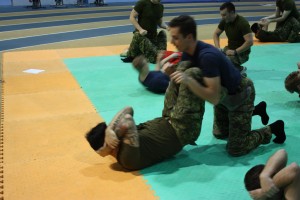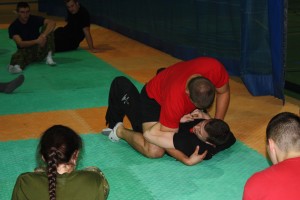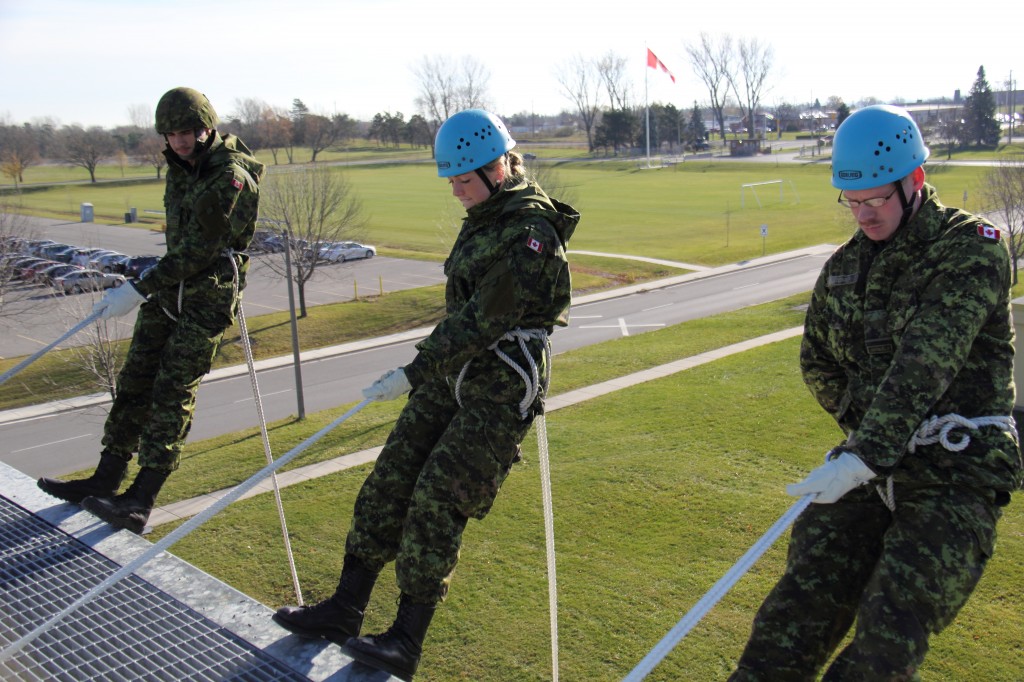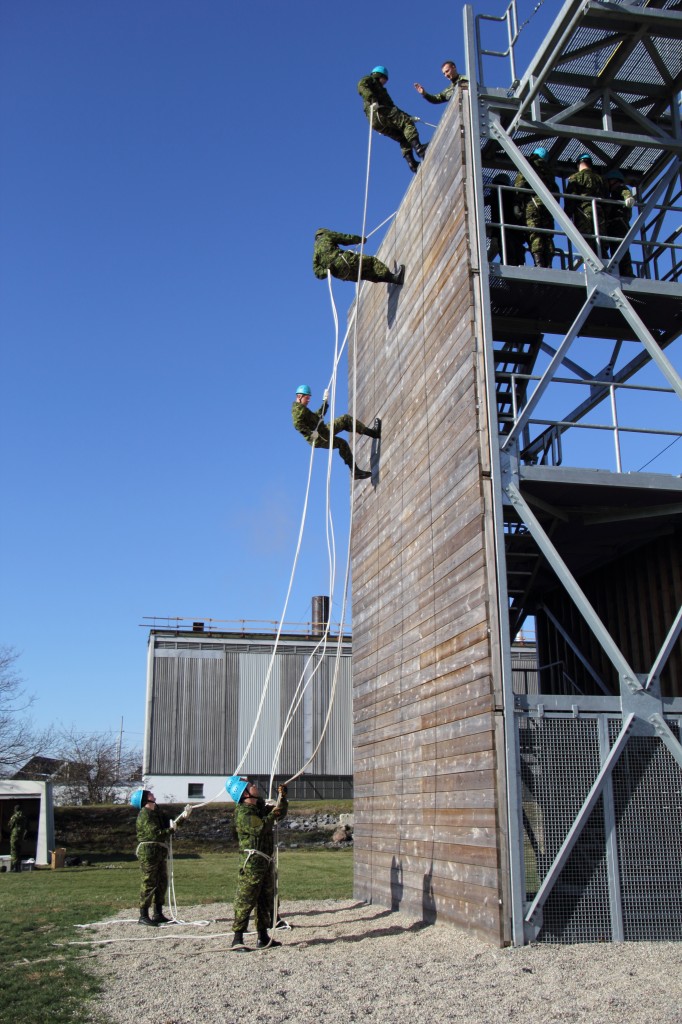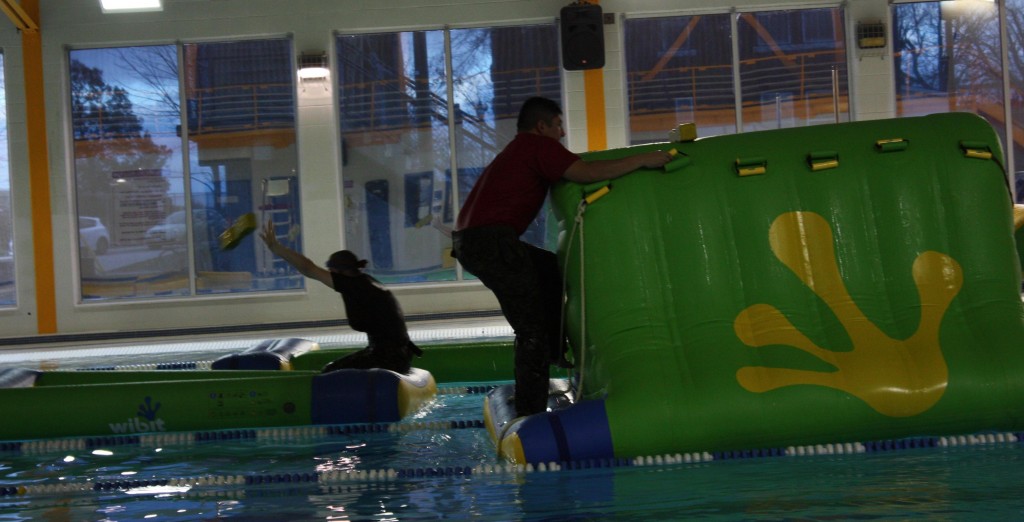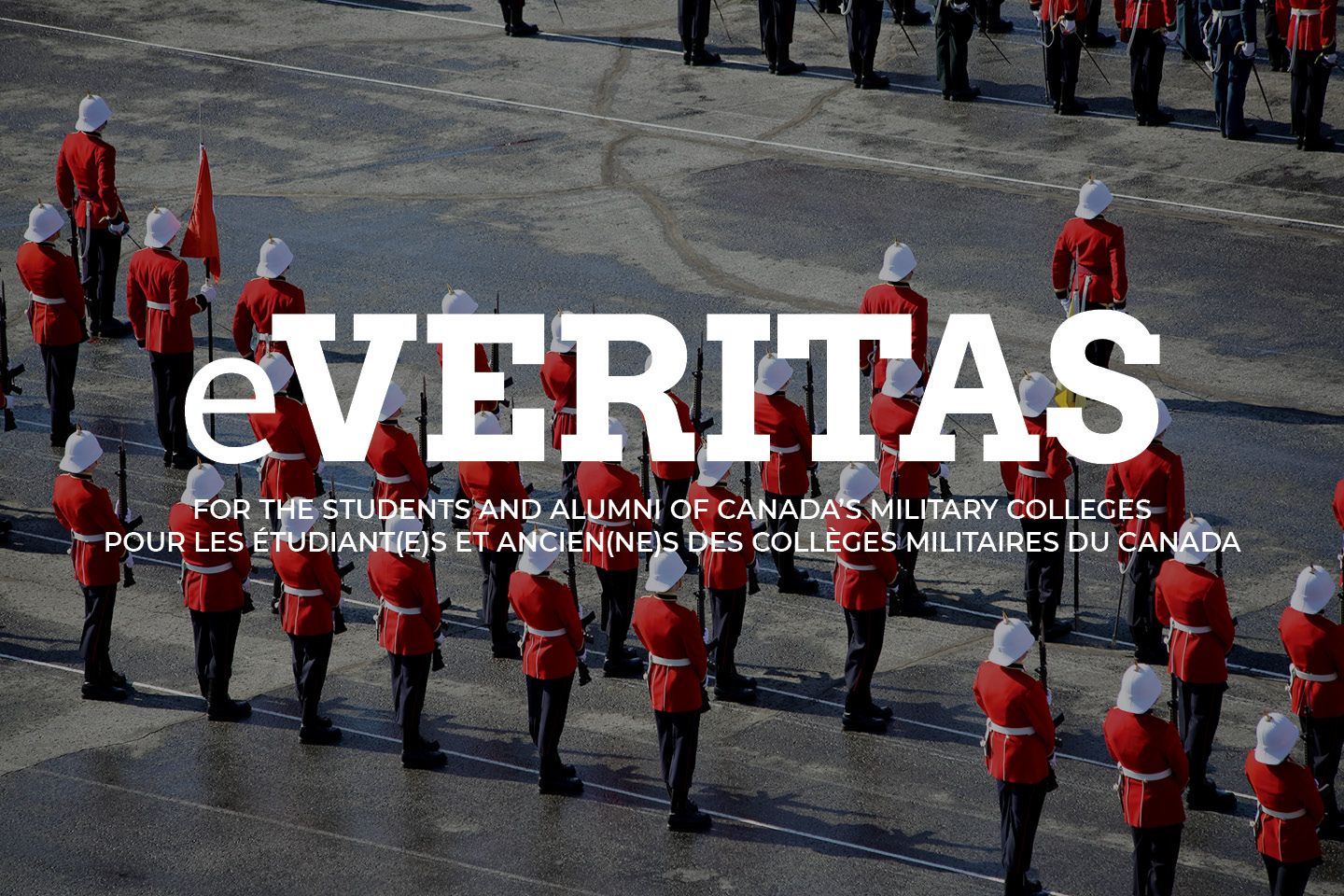
Development Period III – Military and Combatives Skills Shows True Character!
Third in a series of 4 articles
By Kelly Lupton, PE Manager, RMCC
There are a number of experiences that ROTP OCdts get at RMCC compared to their ROTP “Civi U” counterparts. The third year PE program provides many of these experiences that make RMCC the “university with a difference”.
With the physical and mental maturity to be both leader and follower, which is acquired from a number of different experiences up to this point (development periods 1 and 2 in the RMCC CTP, BMOQ, and for some CAP) OCdts are ready to experience the challenges of the third year PE curriculum. This curriculum was developed to provide these more mature bodies and minds with challenging opportunities to work outside of their comfort zone and develop self-confidence, fitness, and leadership skills through military and combatives training while bringing with them to the CF a basic level of military and combatives skills.
Combative Skills
RMC is unique. OCdts belong to many different trades and elements. The Combatives Coordinator, Joel Ridley, has worked hard over the last couple of years to research and assess the best approach to educating this diverse group of OCdts with a set of skills and knowledge that can follow each of them in their careers in the CF. He has worked with a number of different groups and people, both military and civilian, to establish a comprehensive approach to the RMCC Combatives program. In general, “OCdts learn technical and tactical techniques in unarmed combat including grappling survival, kicking and striking and levels of response to an aggressor, and utilizing techniques at a high intensity and under stress”, explains Joel. Specific to the new CTP, Joel adds that “there were some new techniques added this year to make the program as efficient as possible with the allocated class time to give OCdts the necessary, reality based, skill set to be able to defend themselves in the most prevalent unarmed combat situations.” The OCdts will be put through a final skills assessment at the end of their combatives training where they will be required to demonstrate the skills learned.
When asked about what OCdts experience in the combatives program and how they perform in the classes Joel explains that the program offers a physical fitness challenge to work at a high intensity for prolonged periods but also the mental challenge to be able to evaluate a situation, adapt to changes and make critical decisions under stress. He adds, “Having to do combative techniques at a high intensity while under stress allows the OCdts the opportunity to expose their character. Not just their level of fitness but also their ability to persevere, make quick decisions while under duress and be able to adapt to a changing environment. It gives them a reality check on where they stand in these critical leadership skills.”
After all the effort and work in putting this new program together over the last year, the most exciting part of the changes made in the curriculum, according to Joel, “are to see how motivated and excited the OCdts are to learn the techniques and see how quickly they become proficient at them.”
Rappelling Skills
Read More…
Challenging the OCdt’s mental and physical strength by having them rappel off of a helicopter skid from a height of 40 feet is what Jean Blanchet, Military Skills Coordinator does best! Of course Jean ensures that the OCdts learn some information and skills first, which include the characteristics of all equipment required for rappelling, Swiss seat construction, ground training and words of command, rappelling skills and break man responsibilities. In a high risk environment where some are even challenging their own fears this knowledge and skills can’t be skipped.
Once the basics are under their belts, the rappelling begins and each OCdt’s character is exposed. As Jean puts it, “Once you are at the tower there is no turning back. Doesn’t matter what MOC you have or the color of the uniform you wear, every OCdt in the program needs to rappel and will have the opportunity to improve their rappelling skills from both of the walls (low and high walls) and the skid.” The new CTP requires that certain skills are assessed and successfully demonstrated by each person prior to passing this portion of the course.
When asked about what happens with those that have a fear of heights Jean says that “everyone is given the opportunity to rappel at their own pace. However, we do understand that some have a fear of heights. Therefore, we can adjust our approach and influence them to conquer their fear. Others will feel the peer pressure to rappel and try harder techniques, which is a great thing to witness, as it brings them out of their comfort zone and helps them reach a higher rappelling skill.”
Warm or cold weather, from September to April, you can find Jean and other PSP staff delivering this very challenging rappel program. As Jean put it, “It definitely re-emphasizes the fact that we are a university with a difference.”
Waterborne Training
The final component of the third year curriculum is the waterborne training. In a nutshell this training can be simply described as military obstacle course in the water completed in combats. The training advantages, of course, go much deeper. In these classes OCdts are exposed to many unique methods of military style circuit training in an aquatic environment. Bert Breuvart, the Aquatics Coordinator, explains, “They are challenged every week in both individual and team challenges, from using one or two obstacles to a full obstacles course that will require agility, endurance, strength and skill to complete the course.” At the end of the course all OCdts must complete a 6 length obstacle course in a certain amount of time. The ultimate goal is to physically challenge the OCdts and also provide them with some practical fitness training ideas as future leaders in the CF.
As with heights, water is a fear for many. Once again this course can be very challenging for some. However, the program is modified by Bert to ensure that the OCdts feel success and pride in overcoming personal challenges. “The non-swimmers, or weaker swimmers, are still put to the test but are provided the option at first to do the course wearing a lifejacket or Aqua belt. Usually these individuals get good enough to remove the vest by the end of the course. It really built the non-swimmer confidence and proud of achievement throughout the term.”
In conclusion, by the end of third year PE OCdts have been challenged and most have stepped out of their comfort zone, showed real character, and grown from the experience. The RMC PE staff is excited to be the ones delivering this curriculum and experiencing this growth first hand. It is one of the most rewarding parts of the job. (Click on photos for better viewing)


